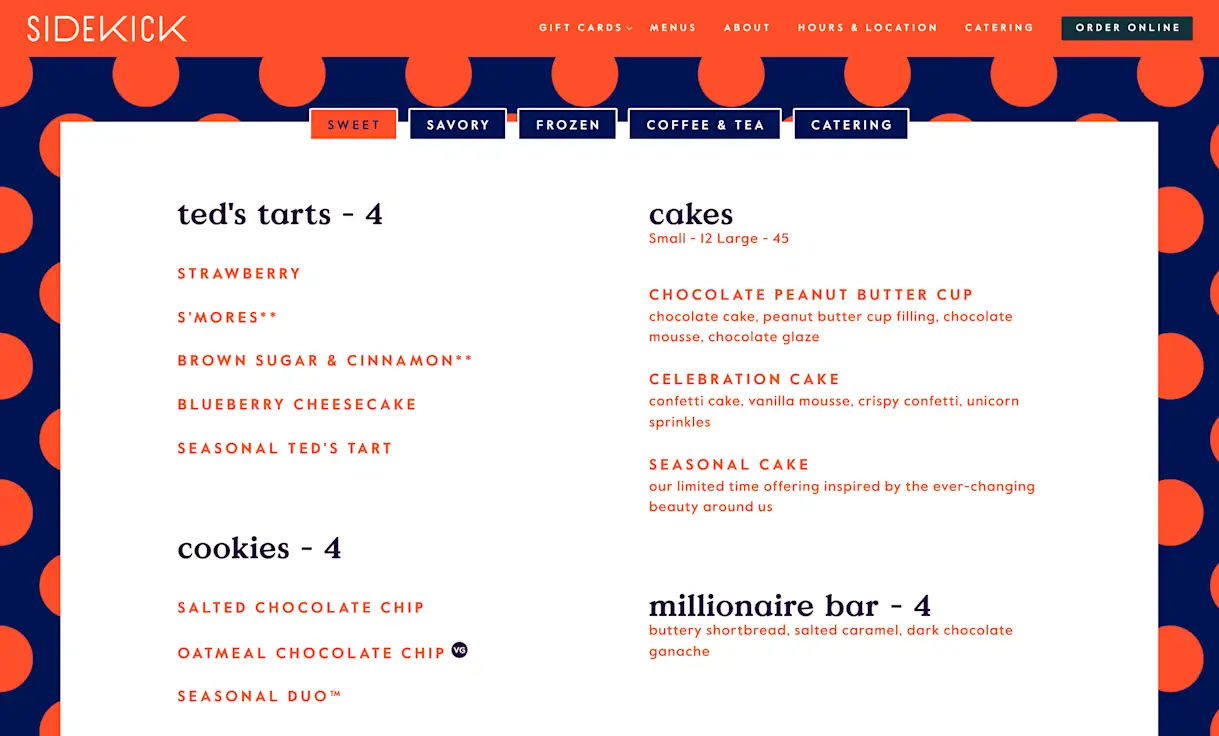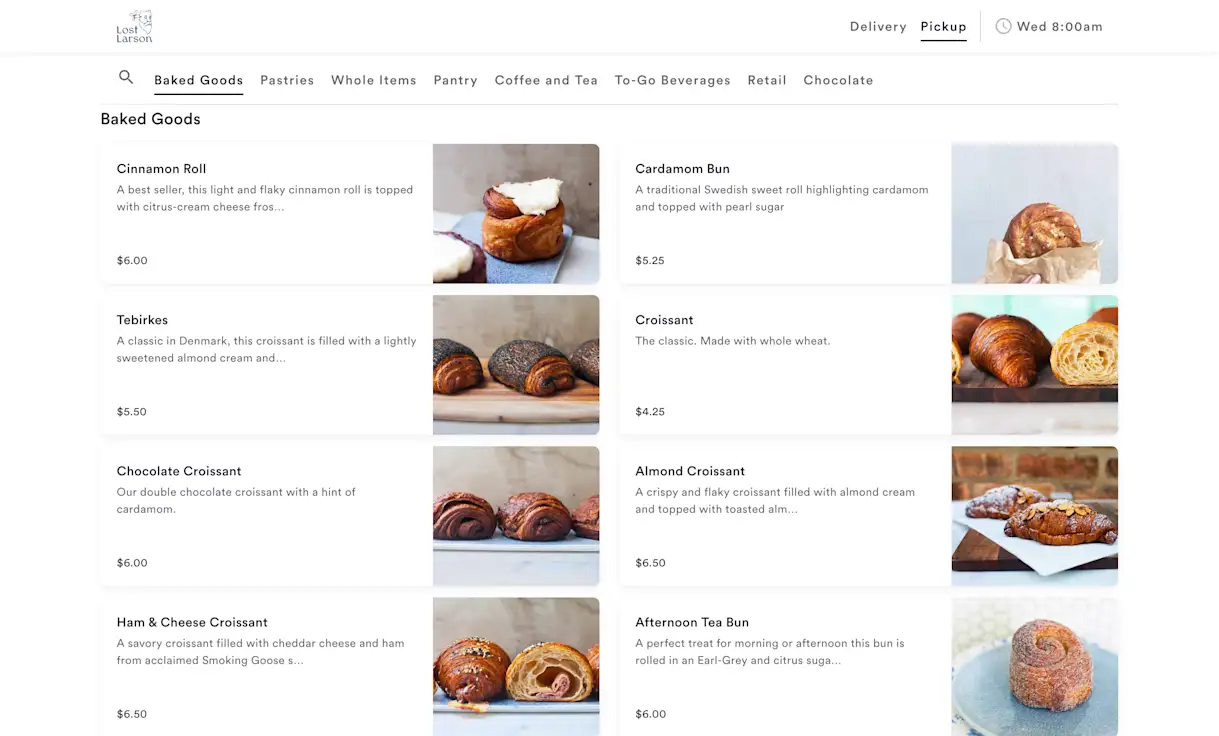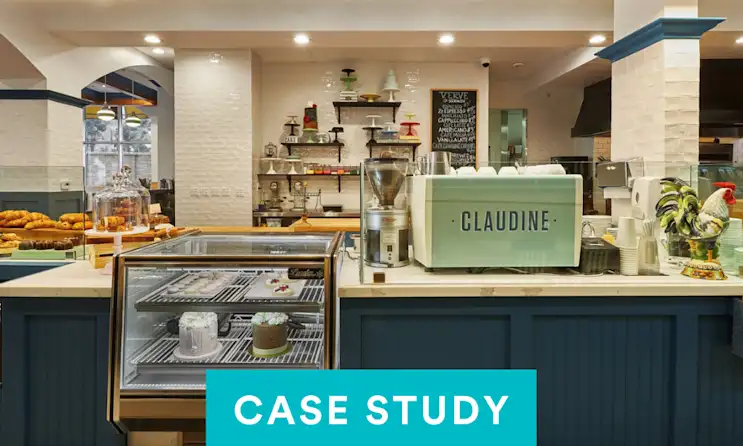New Openings
How to Open a Bakery: The 6 Key Steps
June 20, 2023
A step-by-step guide to planning, financing, designing, staffing, and marketing a new bakery.
Starting a bakery requires careful planning and strategic decision-making to ensure success. From creating a comprehensive business plan to securing financing, obtaining permits, designing a menu, hiring staff, and implementing a marketing strategy, each step plays a crucial role in establishing and growing your business. In this guide, we’ll walk you through the key steps involved in starting a bakery, providing insights and tips to help you navigate the process.
Step 1: Create a Bakery Business Plan
As the saying goes… if you fail to plan, you are planning to fail. Putting together a defined business plan as a first step is crucial. A business plan is a document that lays out your objectives and how you will achieve your goals. It’s also a great exercise in thinking through a comprehensive strategy. When you dig into the details, gaps are easier to identify and proactive planning can prevent large oversights down the line.
A business plan for a bakery is also important for finding financing (covered in step 2) because it shows potential investors a path to success. Grab our free template below to get started.
Read more: Free Business Plan Template
Elements of a Bakery Business Plan
Executive Summary: Summarize your key information in this opening section of your business plan. Typically this is a 1-2 page overview of what’s to come in the document.
Leadership Team: Create visibility for those involved in the project. Who will be on your opening team? Gather headshots and short biographies of your leaders. This builds trust and credibility by sharing more about your team members and what makes them qualified to open a bakery.
Business Overview: Introduce the concept of your bakery. Will it be a traditional bread shop? Will you sell other items like sandwiches, soups, and bowls? Are you planning to produce wedding cakes? Share your mission statement, an overview of your menu, and details of your service style here.
Industry & Market Analysis: Provide a well-researched, detail-heavy review of your location and audience. How will you stand out from the competition? Who is your target market? Consider sharing your bakery’s target customer profile and the local competitive landscape here.
Marketing Strategy: Build on the market analysis above by defining how you’ll attract your ideal customer. Brand positioning and priority marketing channels should be outlined here. A more comprehensive marketing plan comes later.
Operating Model: Describe the logistics of how the bakery will run efficiently. Explain the service model, protocols for hiring and staffing, sales and inventory management, and how technology will be used in the establishment.
Financial Overview & Projections: Present a sales forecast for how and when the bakery will become profitable. Also include a projected profit & loss statement and break-even analysis with supporting documentation. This section is imperative for securing funding.
Read more: How To Run a Profitable Restaurant
Step 2: Choose a Location & Find Financing
Once you have your bakery business plan written up, it’s time to select a location for your business. Restaurant real estate and leases is a complex topic, so check out the recommended reading below in addition to consulting with professional advisors and attorneys.
Read more: How to Navigate Restaurant Real Estate and Leases
Depending on the type of bakery you’re looking to open, the size of your space, and your geographic location, the cost to open a bakery can be anywhere from $54,000 to $152,000.
Some costs to account for are:
Leasing or purchasing fees
Permitting and licensing fees
Utilities
Equipment
Inventory and supply costs
Technology (website, online ordering, POS, gift cards)
Labor costs
Furniture and seating
Marketing and promotion
Incidentals
Common Sources of Funding
Small Business Administration Loan: The U.S. Small Business Administration (SBA) was created in 1953 to help small business owners and entrepreneurs gain access to counseling, capital, and contracting expertise. Through their funding programs, various types of loans are available. The most common one for restaurants is the 7(a) loan, which covers big expenses like restaurant equipment and real estate.
Restaurant Investors: Look to venture capital firms or even individual “angel” investors for funding. In this arrangement, investors buy a percentage of ownership in the bakery at an agreed upon valuation of the business. Because they have skin in the game, investors are motivated to grow your bakery with you.
Crowdfunding: Companies like Kickstarter, WeFunder, Honeycomb, GoFundMe, Patreon, and IndieGoGo involve many patrons contributing small amounts of money to show their support. This tactic can be tricky to get going, but if you can find and grow an audience, this doubles as a marketing tool for building anticipation of your opening. Consider this route if you have a large network to tap into.
Merchant Cash Advance: This is a type of business financing that involves receiving a set amount of capital that you’ll repay using a percentage of your sales plus interest. This is an option if you need cash quickly as funding typically comes through in 24 hours. However, it’s incredibly expensive with annual percentage rates being in the triple digits, sometimes up to 350%. You’ll likely only want to turn to this if you’ve exhausted all other options.
Friends and Family: Proceed with caution here. Mixing professional and personal life can create challenges. However, you know your unique situation best. Leaning on those closest in your life financially to pursue your dreams may make sense in some circumstances.
Step 3: Secure Permits
There are several licenses and permits that you need to obtain in order to legally operate your bakery. Keep in mind that permit requirements can vary by location, so it's important to research the specific regulations in your area or consult with local authorities to ensure compliance.
In general, you can find the details of what’s needed by searching "[name of permit]" + "[restaurant location]" on Google. It's crucial to research the regulations in your area thoroughly and consult with local authorities or legal counsel to ensure compliance when opening your bakery.
Read more: How to Navigate Restaurant Licenses and Permits
8 Important Permits & Licenses
Business License: Just like any other business, you will need a business license to operate your bakery legally. This license acknowledges your bakery as a legitimate entity and will cost between $50 and $300 depending on your location.
Food Service License: A food service license is essential for bakeries as it ensures that you meet the necessary health and safety standards for handling and selling food. It’s typically provided by the local health department. Budget a few hundred dollars for this license.
Employee Health Permit: Employees who handle, store, and prepare food in your bakery may need to obtain an employee health permit or food handler's permit. This permit demonstrates their understanding of food safety principles and may require completing a training course like ServSafe and passing an exam.
Seller's Permit: A seller's permit allows your bakery to collect sales tax from customers. It is necessary if your state imposes sales tax. Alaska, Delaware, Montana, New Hampshire, and Oregon are the only states with no sales tax. Registering for this permit is usually free, but about a dozen states charge a fee. See which ones here.
Resale Permit: A resale permit allows bakeries to purchase nontaxable goods at wholesale, which will be resold later. This permit allows you to avoid double taxation and only pay sales tax on items consumed from the business. It helps keep food costs low by not requiring sales tax on inventory. You’ll only need this permit if your state requires sales tax.
Certificate of Occupancy: A certificate of occupancy guarantees that a bakery’'s establishment is deemed safe and suitable for conducting business. For this permit, you’ll need to pass an inspection conducted by the local zoning department. This ensures that the building complies with fire safety regulations, proper wiring, and other structural requirements.
Sign Permit: If you plan to display outdoor signage for your bakery, you may need a sign permit. This permit ensures compliance with local regulations regarding the design, size, and placement of signs. Sign permits are managed by your local city or town government and start around $100.
Waste Management Permit: If your bakery generates significant waste, such as food scraps or packaging materials, you may need permits for proper waste disposal. This can include dumpster placement permits or adherence to specific recycling guidelines.
Step 4: Design Your Menu
Your bakery’s menu plays a crucial role in attracting customers and keeping them coming back for more. Spending time to build a well-crafted menu not only drives customer interest and revenue, but it’s also a key part in your branding.
Read more: How to Write the Best Menu Item Descriptions
How To Build Your Menu
Define your concept. It's important to hone your bakery's concept. Determine the key products and specialties that will set your bakery apart. Consider focusing on a few items that you can excel at, such as artisanal bread, pastries, or specialty cakes. By specializing in a few signature products, you can build a reputation for excellence in those areas.
Break down the menu by section. Once you have identified your bakery's specialties, organize your menu into sections. For example, you could categorize items based on product type (breads, pastries, cakes), occasion (breakfast, afternoon tea, celebration cakes), or dietary preferences (gluten-free, vegan). A clear and well-structured menu makes it easier for customers to navigate and find what they desire.
Consider food allergies & restrictions. Keep in mind a variety of dietary needs for customers with certain preferences or allergies such as gluten-free, nut-free, or vegan items. This inclusivity will expand your customer base and ensure that everyone can find something to enjoy at your bakery.
Set price points. Pricing your bakery items requires a delicate balance. You want to set prices that reflect the quality of your ingredients and craftsmanship while remaining competitive in the market. Take into account factors like ingredient costs, labor, and overhead expenses when determining the price points. Be mindful of maintaining a reasonable profit margin while offering value to your customers.
Evaluate your menu regularly. Menu engineering is an ongoing process. Assess the popularity and profitability of each item on your menu overtime. Highlight the best-selling and most profitable items, and consider removing or reimagining underperforming ones. This analysis will help you optimize your menu for maximum profitability and customer satisfaction.
Menu Design Considerations
Print Menu Design: The design of your print menu can significantly impact customer perception and ordering decisions. Use strategic design techniques to draw attention to your featured items, such as placing them at the top or in dedicated sections. Incorporate eye-catching visuals and ensure that the menu design aligns with your bakery's branding.
Online Menu Design: Don’t make the mistake of uploading a PDF menu to your website — this is a big no-no for restaurant SEO. Text-based menus are the way to go and restaurant website builders like BentoBox make it simple to set up. Sidekick Bakery in Arlington, Virginia is a great example.

Menu Descriptions: Craft compelling and descriptive descriptions for each menu item. Use enticing language to paint a vivid picture of the flavors, textures, and aromas that customers can expect. Clear and detailed descriptions reduce customer questions and increase confidence in their ordering decisions.
Online Ordering: When choosing an online ordering system, look for a tool that follows e-commerce best practices to maximize conversions. Keep an eye out for an organized navigation, mobile optimization, and a user-friendly interface. Utilize clickable menu items that expand for customization. By streamlining the online ordering process, you can enhance customer satisfaction and increase sales. BentoBox online ordering has a 98% checkout rate on cart additions. Check out how Chicago bakery Lost Larson uses the platform to drive orders.

Step 5: Hire Staff
Assembling a skilled and reliable team is vital for success. The foodservice industry is known for its labor challenges, and it's crucial to proactively recruit and hire employees who align with your bakery's vision and values.
“I do all of our hiring for the front of house team, and I always tell staff that the most important thing to me is that people feel welcome when they walk in the door,” said Amy Gregg of Little Tart.
It’s pivotal that your entire team is on the same page about the customer experience you’re trying to create. Every step in the hiring process contributes to building a strong and dedicated bakery team, from writing job descriptions to making competitive offers.
Read more: How to Hire Restaurant Staff & Utilize Staff With Limited Resources
How to Hire Bakery Workers
Write a Job Description: Start by creating accurate and compelling job descriptions that clearly outline the responsibilities and requirements of each position. Ensure that the description highlights the value of the opportunity for potential candidates, emphasizing career growth and development within your bakery. A well-written job description sets the foundation for attracting the right candidates. Check out: 33 Restaurant Job Descriptions + Free Templates
Distribute the Job Posting: Utilize multiple platforms to promote your job openings on industry-specific job boards like Culinary Agents and Poached. Additionally, feature the job descriptions on your bakery's website and leverage social media to reach a broader audience. Encourage employee referrals by implementing an employee referral program, rewarding current employees who refer successful candidates.
Conduct Interviews: The interview process is a critical opportunity to assess candidates and gauge their fit with your bakery's culture and values. Ask open-ended questions that allow candidates to showcase their skills, work ethic, and problem-solving abilities. Behavioral questions that explore past experiences and challenges are particularly valuable in evaluating a candidate's suitability for your team.
Make a Competitive Offer: Once you've identified the ideal candidate, extend a job offer promptly. The offer should clearly outline the terms of employment, including salary, benefits, and any specific expectations. While you may have limited flexibility with negotiation, be aware of industry standards and consider offering competitive compensation packages to attract and retain top talent.
Step 6: Promote Your Bakery
Establishing a strong brand, leveraging online and traditional marketing strategies, creating a timeline, setting measurable goals, and prioritizing key online marketing channels are all essential elements of a successful bakery marketing plan. We’ll guide you through each step, helping you develop an effective marketing strategy for your bakery's grand opening and beyond.
Read more: Free Marketing Plan Template
How to Build a Marketing Plan
Branding & Positioning: Define how you want your bakery to be perceived by your target audience. Identify your ideal customers, understanding their demographics, preferences, and challenges. Develop a cohesive brand identity, including a compelling logo, brand colors, tagline, and tone of voice. Ensure that these elements resonate with your target audience and differentiate your bakery from competitors.
Online Marketing Strategy: Leverage the power of digital marketing to reach and engage potential customers. Your bakery's website should serve as a captivating online storefront. Optimize it with search engine optimization (SEO) techniques to improve visibility in search engine results. Embrace organic social media platforms, paid social media advertising, email marketing, loyalty programs, and online reviews to expand your reach and build customer loyalty.
Traditional Marketing Strategy: While online marketing is crucial, traditional marketing methods can also be effective for promoting your bakery. Consider direct mail campaigns and community engagement initiatives. Explore opportunities for traditional media advertising in local newspapers, magazines, radio, or TV. Include any offline engagement strategies like hosting ticketed events — baking classes and cookie decorating are popular ideas to attract and retain customers.
Timeline & Roadmap: Develop a timeline that outlines the rollout of your marketing initiatives. As a new bakery, it's important to set realistic expectations. Determine which marketing channels and activities are essential for your launch, such as an SEO-optimized website, organic social media presence, and email marketing. Plan to implement additional strategies, like paid social media advertising, in subsequent phases of your bakery's growth.
Budget & KPIs: Allocate a budget for your marketing efforts and establish key performance indicators (KPIs) to measure success. Avoid the common mistake of neglecting to set specific KPIs. For instance, if you invest in paid social media ads, forecast the expected website traffic, online checkouts, and revenue generated from those ads. This data will enable you to evaluate performance, gauge the effectiveness of your marketing initiatives, and inform future budget allocations.
Key Online Marketing Channels for Bakeries
Website: Your bakery's website is a vital touchpoint for potential customers, and it should reflect your brand story. Incorporate SEO techniques to improve search engine rankings. Include features like online ordering, merchandise stores, gift cards, and pre-order & catering to enhance customer convenience.
Email Marketing: Utilize your website's online ordering functionality to capture customer emails and build an email list. Implement automated email campaigns and digital loyalty programs to re-engage past customers. A robust email strategy helps increase customer lifetime value and fosters long-term customer relationships.
Organic Social Media: Establish a presence on platforms like Facebook, Instagram, Twitter, and TikTok, depending on your target audience. Share engaging content and build a community of followers. Instagram offers a broad audience, native food communities, and valuable restaurant tools like story ordering stickers.
Paid Social Media: Complement your organic social media efforts with paid advertising to reach a wider audience, particularly as a new bakery. Start with small but impactful ad spends on platforms like Facebook and Instagram. These platforms provide user-friendly ad platforms, allowing even modest budgets to make an impact.
Reviews: Embrace review websites such as Yelp, TripAdvisor, and Google Reviews by monitoring and engaging with your online reviews. Monitor and respond to reviews, both positive and negative, diplomatically. Encourage loyal customers to share positive reviews to enhance your bakery's reputation.
Open Your Doors!
Running a bakery requires dedication, meticulous planning, strategic hiring, and effective marketing. These days, there are plenty of technology platforms and resources that have made managing bakery operations and delighting customers more efficient than ever before.

Get Started
Build Your Bakery’s Online Presence
Get a customized website, online ordering, and pre-order & catering tools from BentoBox so you’re set to sell out on the regular.
Recommended

Commerce
Claudine on Selling Event Tickets and Growing Their Catering Operations
December 15, 2016
How the LA-based restaurant and bakery uses digital tools to grow their business

Design Inspiration
The Best Bakery Websites of 2024
January 1, 2023
A roundup of some of our favorite bakery websites.

Interview
Q&A with Seylou Bakery on Restaurant Website Tools
December 14, 2017
We talk fresh whole grain flour, website design tools and more

